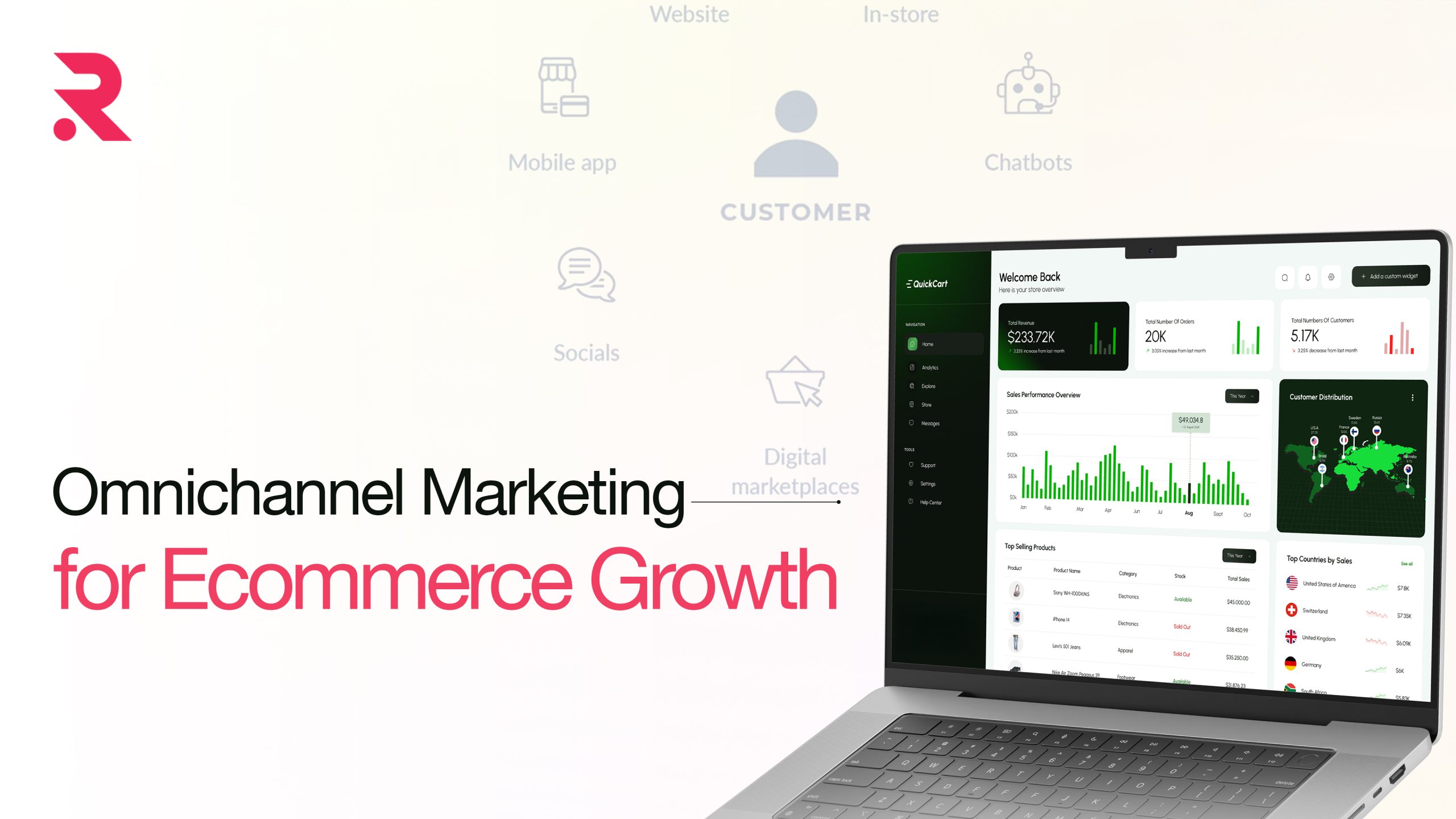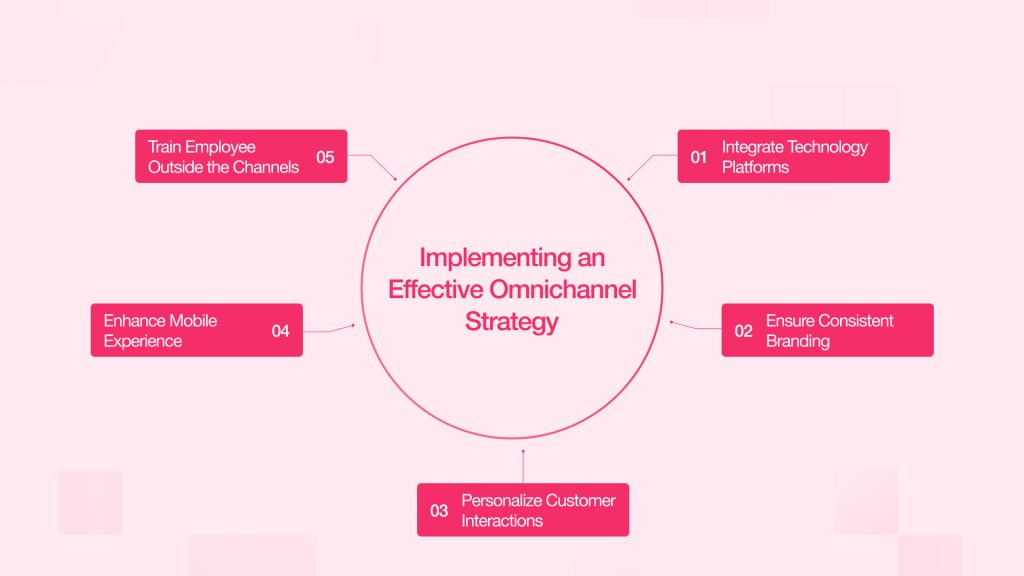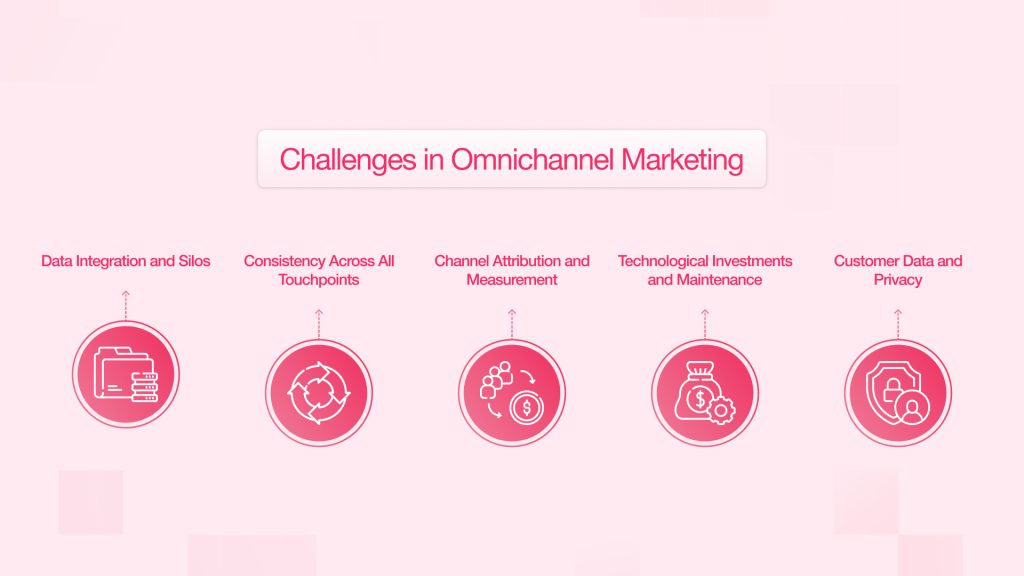The Power of Omnichannel Marketing in Driving Ecommerce Growth
Omnichannel marketing is reshaping the eCommerce landscape, it has merged online and offline touchpoints to present cohesive shopping experiences that help improve customer loyalty and revenue. This article tries to present explanations as to how the adoption of an omnichannel strategy works for eCommerce growth.
- June 3, 2025
- by Tarun


Omnichannel marketing refers to an approach that integrates multiple channels into one strategy. Multichannel marketing stresses operating each channel as a different silo, which contrasts omnichannel marketing in that customers are offered the conscious experience of seamless branding across whichever platform they choose. The approach fulfils the modern consumer’s expectations and achieves significant results for a business.
Various statistics highlight how important omnichannel marketing is for driving growth in ecommerce. Businesses with a strong omnichannel strategy are found to grow their annual revenues by 9.5%, while weak strategy brands fall behind at 3.4%. Likewise, consumers in touch with brands through multiple channels shop about 1.7 times more than those using just one channel.
Omnichannel marketing has the capacity to push eCommerce growth, and this article explores such power. We will be discussing the impact of channel integration in creating customer engagement and personalization that grow sales and customer loyalty. By providing insights into present trends and practical takeaways, we intend to lend eCommerce businesses some insight into the way to carry out their omnichannel marketing strategies.
Understanding Omnichannel Marketing
The essence of omnichannel marketing lies in delivering a seamless and unified customer experience across both digital and physical platforms. That way, a customer can reach out to a brand through any of their preferred points of interaction: browsing through the website, engaging on social media, or simply walking into a store.
Integration is the key to successfully good omnichannel marketing. All channels should be interconnected with an uninterrupted flow of information and one message. Integration allows for businesses to monitor customer interaction across platforms-correlating into useful insights about behavior and preference.
For example, whereas a customer might learn about a certain product on social media, specific customers might then research it on a mobile app before purchasing it at an actual store. Therefore, the omnichannel strategy must focus on making sure the experience at every single stage of this customer’s journey is both uniform and tailored for the customer.
The Role of Omnichannel Marketing in Ecommerce Growth
Increased Customer Engagement
Deep customer engagement is promoted by omnichannel marketing by meeting customers where they are. Brands are able to engage with consumers on multiple platforms, provide relevant content, and create personalized experiences. This multi-touchpoint approach retains the customer’s attention, encouraging yet another interaction.
Enhanced personalization
Omnichannel approaches allow companies to utilize multiple data points to sustain a composite image of customer tastes and behavior. Having this information allows these companies to provide customers with personalized recommendations, and appropriately timed marketing messages. That increase the chance of a potential sale.
Improved Customer Loyalty
Maintaining consistent and personalized experiences acts as a conveyor for trust and satisfaction, thus increasing the rate of customer retention. When customers feel connected to a brand, they are more likely to make repeat purchases and promote the brand to others. It fuels sustained growth over time.
Higher Conversion Rate
Offering a consistent shopping experience across all platforms helps eliminate potential obstacles within the customer journey. This ease and consistency factor leads to higher conversion rates, as the purchase is completed more frequently when the customer flow is smooth and intuitive.
Better Inventory Management
Omnichannel strategies enable retailers to track inventory in real time across all sales channels. Keeping track of stock, unemployment hours will minimize overstocking or stockouts so that goods are ready whenever a customer wants to take them.
Need a Reliable Ecommerce Development partner to help grow your Business?
Our Experts Can Help!
Implementing an Effective Omnichannel Strategy
The benefits of omnichannel marketing can be harnessed by the business through the below-mentioned steps:

- Integrate Technology Platforms: Integration across channels is required by CRM systems, data analytics tools, and inventory management software to gather actionable insights.
- Ensure Consistent Branding: Uniform messaging, design, and tone across all touchpoints reinforce brand identity and build customer trust.
- Personalize Customer Interactions: Using data to develop a profile of customer preferences while delivering experiences that match individual needs.
- Enhance Mobile Experience: Establishing a mobile interface that is user-friendly and well-integrated with other channels will be very pertinent as more and more people use their smartphones to shop.
- Train Employees Outside the Channels: Teach employees to be able to deliver a consistent service and build the knowledge to effectively serve customers, be it in the online channel or in the physical retail space.
Challenges in Omnichannel Marketing

Data Integration and Silos
One major challenge for businesses is that customer data remains highly fragmented across various platforms. If not integrated well, customer data are fenced off, in-store systems are on one end, and eCommerce, email marketing, social media, CRM platforms, and all of these respective tools are on the other end. This fragmentation bars the brands from having a one-eyed view of the customer that better provides consistent and relevant experiences. To address this, investments should be made in centralized data platforms and analytics tools capable of offering consolidated insights across channels.
Consistency Across All Touchpoints
Maintaining consistent messaging, pricing, and servicing across all divided marketing channels can become difficult indeed. Customers expect to see the same prices and promotions while purchasing from the brand whatsoever-the online website, mobile app, or brick-and-mortar store. Any discrepancy shatters trust and loses sales. Hence, the company should have protocols and systems in place that specify all departments work from a certain dataset and brand guidelines.
Channel Attribution and Measurement
Performance measuring of an omnichannel campaign is more difficult than that of traditional campaigns limited to only one channel. Customers may first interact with a business on social media, later enter the URL into their phones to visit the site and finally carry out the purchase at an actual physical store. Giving revenue and engagement attribution to each channel should be ideally accurate for marketing investment and strategy optimization. Advanced attribution models and tools that track and analyze behavior at every customer interaction are required by the business.
Technological Investment and Maintenance
In order to be truly omnichannel, businesses must put their money toward solid technology—in systems such as unified commerce platforms; POS setup aligned with the eCommerce channel; real-time inventory management; and automation. There are maintenance costs to consider, such as updates, support, and training, which can deter smaller businesses.
Customer Privacy and Data
Collecting and integrating customer data across platforms comes with responsibility. Rising awareness of data privacy issues means companies must ensure they meet requirements specified within the GDPR, the CCPA, and data protection laws in other parts of the world. Businesses must maintain secure systems, devise clear policies concerning usage, and disclose to their customers how their data is gathered and utilized.
Key Components of a Successful Ecommerce Strategy
The structure of an eCommerce growth through omnichannel marketing must be built around these core elements:
Centralized Customer Data
An omnichannel initiative is supported by a stand-alone customer database, maybe with the customer data platform included. With it, the company can collect, arrange, and analyze data from every customer interaction to form a detailed profile of the customer and better inform engagement subsequently.
Real-Time Analytics
Real-time data acquisition and its analysis can make organizations come up with immediate responses to customer actions. For instance, if a customer leaves his cart untouched, a real-time system will immediately trigger an email or SMS to re-engage that customer. This kind of responsiveness keeps the customer interested, leading to sale conversion.
Channel Interoperability
All the platforms, such as a website, an app, social media, customer service, and in-store systems, must be able to communicate with each other. Interoperability ensures that customer information, product data, inventory levels, and promotions are synchronized across all channels. Without it, the experience becomes fragmented and disjointed.
Personalized Communications
Using data to bring personalization to communication across channels ensures that it is relevant to the receiver. This can include emails, custom homepages, social ads, and chats tailored to customer browsing or purchase histories. Personalization that remains consistent across channels tends to result in greater customer engagement and higher conversion rates.
Flexible Fulfilment Options
Buyers expect more and more options such as buying online pick up in-store (BOPIS); curbside pickup; same-day delivery; and in-store returns for online purchases. The business must be able to organize logistics so that these expectations are met, and inventory visibility remains accurate.
Emerging Trends in Omnichannel Marketing
AI and Machine Learning Integration
Depending upon big customer data, omnichannel strategies are undergoing changes in the presence of an AI that works to predict customer behavior, automate the responses, or work on targeting. Some of the AI-based technologies that make the customer journey more memorable in real time are chatbots, recommendation engines, and predictive analytics.
Augmented Reality (AR) and Virtual Try-On
Retailers are increasingly utilizing augmented reality (AR) to bridge the gap between in-store and online experiences. Brands such as IKEA and Warby Parker use AR for customers to visualize furniture in their homes or try on glasses virtually. These applications help in better decision-making and reduce returns.
Voice Commerce
With the introduction of the likes of Amazon Alexa and Google Assistant, voice commerce is reaching newer heights. Constructing voice-activated shopping into their strategy by the businesses is creating one new avenue for ease of purchase when consumers utilize technology in their everyday lives.
Social Commerce Integration
Instagram, TikTok, and Pinterest now serve as shopping hubs where users can discover and buy products within the apps. Such a channel offers convenience and fulfils impulse buying behavior triggered by content and influencer engagement.
Sustainability Across Channels
Sustainability is the new consumer’s preference. Wherever a brand meets the consumer package design, shipping warehousing, and so on, it uses sustainable practices. This perspective is finding its way into the omnichannel world, changing how consumers pick from options
Looking for a technical partner to help grow your Ecommerce store?
We Can Help
Omnichannel Metrics That Matter
Measuring the success of an omnichannel marketing strategy requires a mixture of performance indicators.
- Retention Rate: This will show the brand’s ability to retain return customers through various channels.
- Customer Lifetime Value (CLV): It represents the entire value of a customer over the course of a relationship with the business.
- Cross-Channel Conversion Rate: This chart tracks how many clients engage with multiple platforms before they convert.
- Average Order Value (AOV): Measures and tracks how much customers spend on average per transaction across all channels.
- Cart Abandonment Rate by Channel: Identifies areas in the journey where customers drop-off and need some focus and improvement in those channels.
- Net Promoter Score: Measures the brand’s customer satisfaction level and their willingness to recommend the brand.
Conclusion
Omnichannel marketing is among the main growth factors for eCommerce in our digitized world. With an industry that provides a truly consistent, connected, and personal experience at every customer touchpoint, trust can be built, the customers’ satisfaction can be fortified, and sustainable profits awarded. Challenges in this regard include data integration, technological investment, and consistency maintenance. However, the right approach and appropriate tools, if chosen, can tackle all these issues.
For businesses aiming to thrive in the future of commerce, omnichannel is not just an option—it’s a requirement. If you are a small brand building online or a storied retailer redefining customer touch point, thinking through omnichannel marketing will be good for you in this ever-more complex and competitive market.
 Shopify
Shopify









